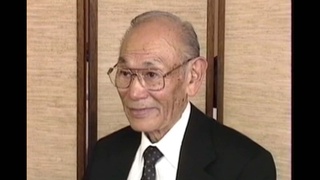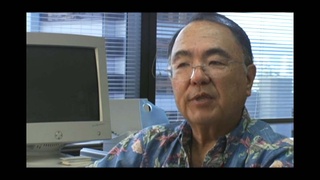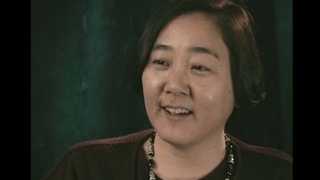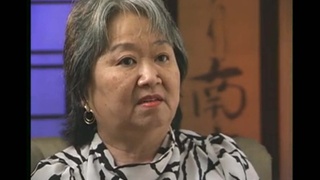Interviews
Helping soldiers
On the grass outside, there weren't even enough blankets for the soldiers. And so all the casualties were lying down on the grass. And one man I remember vividly, he was a young guy, a blond soldier. He must've been 18 or 19. And I was looking after him and he had asked me to write a letter to his mother. So, with only eighth grade education, I couldn't do much. But, he dictated. So I did write the letter for him and he gave me the address to mail the letter. The next morning, I went back to him and he was gone. He passed away that night.
And so, funny how we were really just exposed to all the wartime things. The Army trucks just park in front—our plantation camp was filled with all the trucks and everything. So it scared us, we couldn't go out.
And then, what's funny, two weeks later, I received a letter from Washington D.C. from the Army Department. They had checked our background. They found out that I was an alien. And so they said, We appreciate your support and everything, and You did a good... I still have the letter, you know. And so then, being an alien, I'm sorry but that's about it, you know. And they didn't want me to help anymore. And so I think all my friends, I think, were eliminated from helping. But, that was kind of sad. So, because we grew up during wartime, I think it made it kind of difficult, too. I was considered an alien, I couldn't go out after 6 pm. I couldn't work near Army post. And so, it was kind of difficult for me.
Date: February 19, 2004
Location: Hawai'i, US
Interviewer: Lisa Itagaki, Krissy Kim
Contributed by: Watase Media Arts Center, Japanese American National Museum.
Explore More Videos

The Final Verdict
(1919 - 2005) Challenged the constitutionality of Executive Order 9066.


Less information about Hawai‘i in mainland
(b.1944) Founder of Kobayashi Group, LLC

A teenager's memories of how a local newspaper misrepresented Japanese Americans
(b. 1925) Draft resister

The role of the media in influencing people's opinions
(b. 1925) Draft resister

Reaction to a 1942 speech by Mike Masaoka, Japanese American Citizen League's National Secretary
(1915 - 2011) Nisei florist who resettled in New York City after WW II. Active in Japanese American civil rights movement

First learning about the incarceration experience in college
(b. 1955) Lawyer

Feeling angry upon reading of Supreme Court case, 'Korematsu v. United States'
(b. 1955) Lawyer

Reasons for conformity and competitiveness in Gardena, California
(b. 1946) Lawyer

Search of family home by the FBI following the bombing of Pearl Harbor
(1937 - 2021) Teacher


Not recognizing father after reunion at Crystal City, Texas
(1937 - 2021) Teacher

A child's memories of activities at Crystal City, Texas
(1937 - 2021) Teacher

Hearing about Pearl Harbor
(b. 1921) Nisei veteran who served in the occupation of Japan

Japanese American railroad workers are fired following the bombing of Pearl Harbor
(b. 1923) Chick sexer
